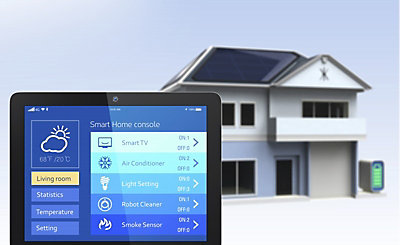Home Automation: 3 Simple Steps To Getting Started

You have one burning question, “How do I get started with home automation?”
It’s hard to answer because there are so many options and technologies to choose from—it makes your head spin.
We feel your pain.
So we put together this simple 3-step roadmap to help you focus your search.
It’ll help you save time and get only the equipment you need so you don’t overspend.
Step 1: Ask yourself, “What do I want to accomplish?”
Shopping for a home automation system is like building a workout plan: You don’t start with wondering what equipment you should use; you start with the desired end in mind.
In other words, what do you want to accomplish? What would make life easier?
- What benefits do you want from home automation? Do you want to…
- Stop doing a repetitive task that you hate to do? (Like turning on and off certain lights.)
- Lower your utility bills?
- Increase peace of mind with better home security?
- Make waking up and coming home easier?
- Make home life in general more convenient and comfortable?
- Help an elderly loved one stay independent as s/he lives alone?
Answering these questions gives you direction for the equipment and technology you need.
For example, if you want to increase peace of mind with better security, you’re going to start looking at security panels, motion detectors, video cameras, locks, etc. that can be integrated into your automation system.
The extent to how much equipment you buy depends on your budget.
Step 2: Determine the network technology you need
Network technology determines HOW your home automation equipment communicates with each other.
Each technology has its pros and cons. And there are limits on what devices can and cannot work together, too. You’ll choose network technology based on what you want to accomplish in step 1.
We can’t get into a comprehensive comparison here. But here are the most common network technologies you should research:
- Z-Wave (The original wireless-only technology for home automation. This technology is good starting point for home automation beginners.)
- X10
- Zigbee
- Insteon
To learn more, read this article comparing home automation network standards.
Step 3: Get the software and hardware you need (consider starter packages)
You’ll need 3 things for a home automation system:
- Software: You’ll use a particular software (free or subscription) to control your home automation system from a smartphone, tablet and/or desktop.
- Home controller (also called a transceiver or coordinator): This is usually a simple box that coordinates all your devices together. Some controllers come with the software built in. Many of the cheaper ones don’t.
- Sensors, switches and other equipment: Here’s where you choose the equipment to meet your goals from step 1. (Example: Security cameras, smart thermostats, light switches. etc.).
An easy way to simplify this step: Buy a starter home automation package. A package bundles the software, controller and other hardware together, ensuring that you’re getting compatible equipment.
Get the package that best fits your needs.
Need help shopping for and installing a home automation system?
Making sure the equipment is installed properly is probably the most important part of getting a home automation system. If you buy all this fancy equipment, but it doesn’t work, then it’s just a waste of money.
If you live in the Atlanta area, we can help you find the home automation equipment you need and then install it for you. This will ensure that your home automation system works flawlessly.
Contact us if you have questions or want a free in-home estimate.
Related Reading
Subscribe To Our Newsletter
Get up-to-date current news, promotions, and industry tips.
